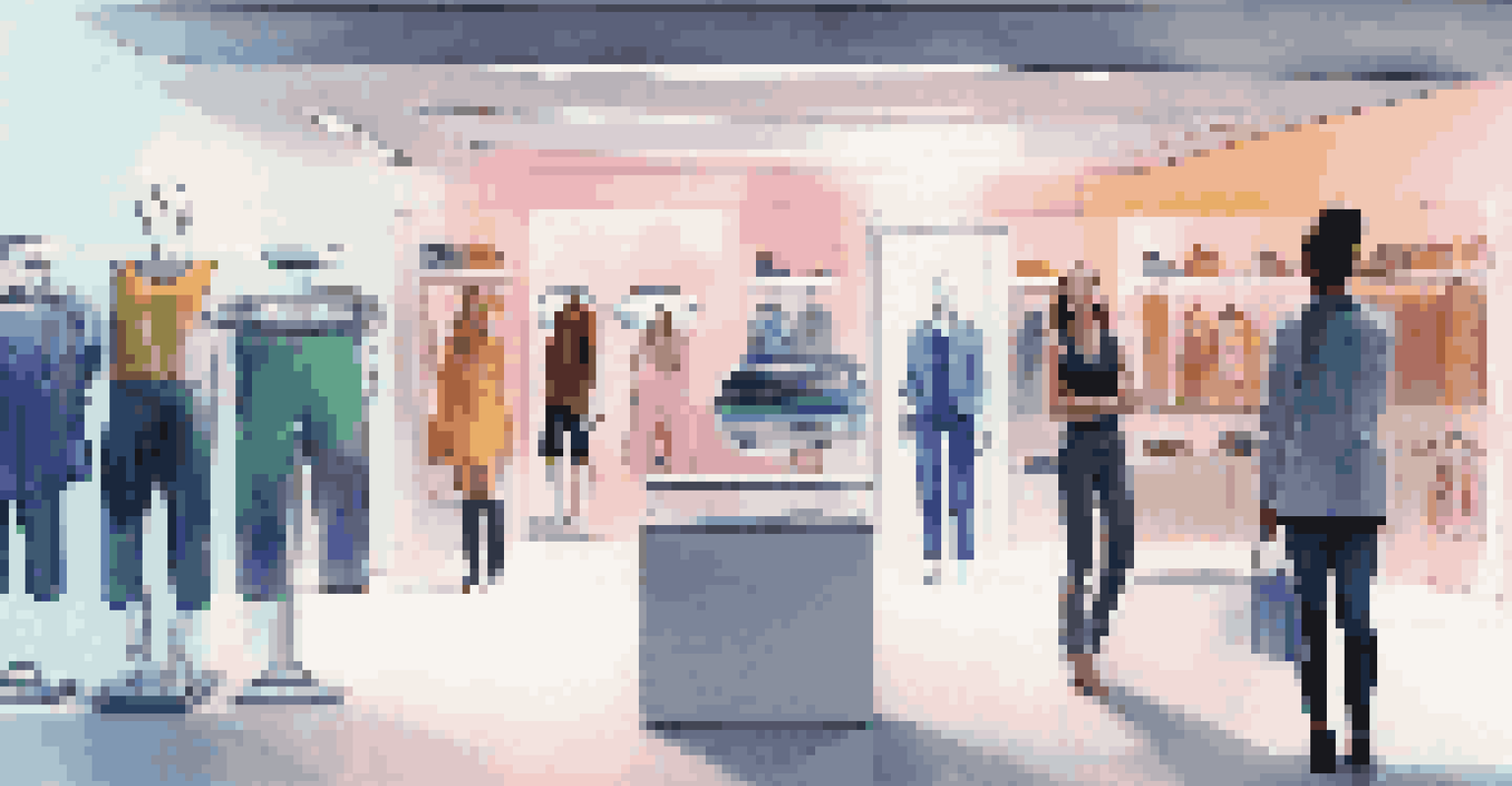Augmented Reality: Enhancing the Checkout Experience in Retail

What is Augmented Reality in Retail Checkout?
Augmented Reality (AR) is a technology that overlays digital information onto the real world. In retail, this means customers can see virtual elements, like product details or fitting rooms, while shopping. Imagine pointing your phone at a dress and instantly viewing it in different colors or styles!
Augmented Reality is not just a novelty; it's a tool that transforms the way we shop by bridging the gap between the digital and physical worlds.
This innovative approach helps shoppers visualize products in a way that traditional merchandising cannot. For instance, AR can show how furniture looks in a customer's living room before they make a purchase decision. It bridges the gap between online and offline shopping experiences.
Ultimately, AR enhances the overall shopping journey, making it interactive and more engaging. As customers become accustomed to these features, their expectations for retail experiences continue to evolve.
Benefits of AR in the Checkout Process
Integrating AR into the checkout process brings numerous benefits for both retailers and customers. One of the most significant advantages is that it reduces the uncertainty shoppers often feel about their purchases. With AR, they can visualize how a product fits into their lives, leading to more informed buying decisions.

Moreover, AR can streamline the checkout experience by allowing customers to access information quickly and intuitively. For example, a shopper could scan a product with their smartphone to see reviews, prices, and availability—all in real-time. This level of convenience can significantly enhance customer satisfaction.
AR Enhances Product Visualization
Augmented Reality allows customers to visualize products in realistic contexts, increasing their confidence in purchase decisions.
Lastly, incorporating AR can create a unique brand experience that sets a retailer apart from competitors. By investing in this technology, brands can foster customer loyalty and encourage repeat visits, knowing they've delivered something memorable.
How AR Enhances Product Visualization
One of the standout features of AR is its ability to enhance product visualization. Instead of merely imagining how a product might look in their home or on their body, shoppers can see it in a realistic context. This capability is particularly valuable in sectors like fashion and home decor.
The future of retail isn't just about selling products; it's about creating experiences that resonate with customers in meaningful ways.
For instance, furniture retailers can allow customers to visualize how a sofa would fit in their living room. By using AR apps, customers can adjust colors, styles, and sizes to find their perfect match. This interactive experience often leads to a higher purchase rate, as customers feel more confident in their choices.
Furthermore, AR can facilitate virtual try-ons for clothing and accessories. By simply using their smartphones or in-store kiosks, customers can see how a piece of clothing looks on them without the hassle of changing outfits. This not only saves time but also enhances the shopping experience.
The Role of AR in Reducing Return Rates
One of the ongoing challenges in retail is managing return rates, which can be costly for businesses. AR can play a significant role in reducing these rates by helping customers make better purchase decisions upfront. By visualizing products accurately, shoppers are less likely to experience dissatisfaction upon receiving their orders.
For instance, if a customer can see how a pair of shoes looks on their feet through AR, they’re more likely to feel satisfied with their purchase. This reduces the chances of returns due to size mismatches or style errors. Fewer returns not only save retailers money but also improve overall customer satisfaction.
AR Reduces Retail Return Rates
By enabling customers to accurately visualize products before purchase, AR helps decrease dissatisfaction and return rates.
Additionally, AR can provide detailed information about product dimensions or compatibility. This means that customers can confirm that what they are buying will fit their needs, further decreasing the likelihood of returns.
Creating an Interactive In-Store Experience with AR
AR technology can make in-store experiences more interactive, enticing customers to engage with products in new ways. Retailers can create AR displays that allow customers to scan products for additional information, promotions, or even immersive storytelling experiences. This interactive element can make shopping feel more like an adventure.
For example, a cosmetics store might allow customers to scan a lipstick tube and see videos of makeup tutorials or reviews. This not only educates shoppers but also encourages them to explore products they might not have considered otherwise. It's a great way to enhance the overall shopping experience.
Moreover, AR can facilitate social sharing. Customers can capture and share their AR experiences on social media, effectively promoting the brand while engaging their own networks. This creates a community feel around the shopping experience, encouraging more foot traffic.
Challenges Retailers Face with AR Implementation
While AR offers exciting possibilities, retailers also face challenges in its implementation. One significant hurdle is the cost of developing and maintaining AR technology. Smaller retailers may find it difficult to invest in such innovations, limiting their ability to compete with larger brands that have more resources.
Another challenge is ensuring that the AR experience is user-friendly and accessible. If customers find the technology confusing or difficult to use, they may become frustrated and abandon the experience altogether. It’s crucial for retailers to test AR applications thoroughly before rollout to ensure a smooth user experience.
AR Creates Interactive Experiences
Integrating AR in retail fosters engaging in-store experiences, encouraging customer interaction and enhancing brand loyalty.
Finally, keeping up with technological advancements is essential. AR is constantly evolving, and retailers need to stay updated on the latest features and trends to remain competitive. This requires ongoing training and investment in new tools, which can be daunting for some businesses.
Future Trends of AR in Retail Checkout
As technology continues to advance, we can expect to see even more innovative applications of AR in retail checkout processes. One exciting trend is the integration of Artificial Intelligence (AI) with AR, which could personalize the shopping experience even further. Imagine an AR system that remembers your preferences and suggests products tailored to your style.
Additionally, the rise of mobile commerce means that shoppers are increasingly using their smartphones for purchases. Retailers will likely develop more mobile-friendly AR applications that enhance the shopping experience directly from customers' devices. This convenience will cater to the growing demand for seamless shopping solutions.

Finally, as consumers become more accustomed to AR, its use may extend beyond the checkout process. We could see AR-enhanced loyalty programs, interactive advertisements, and personalized promotions that engage customers at every touchpoint. The future of retail is bright with AR shaping experiences in ways we are just beginning to explore.